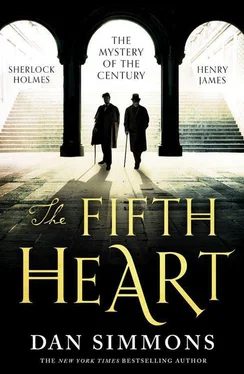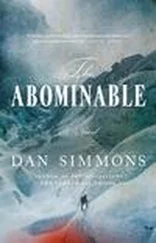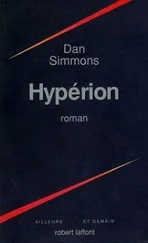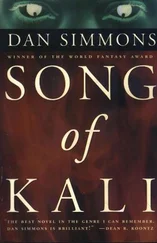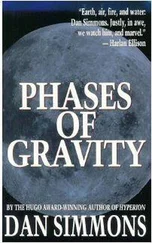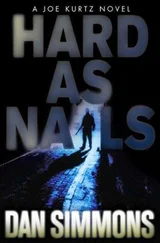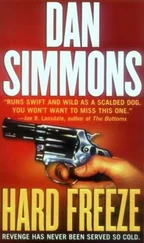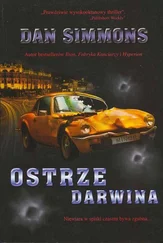Holmes, Drummond, and James followed him down from the Peristyle Promenade without speaking.
* * *
The Manufactures and Liberal Arts Building was by far the largest and most imposing structure they visited. The interior was chaos this day—a very controlled chaos once carefully observed—as thousands upon thousands of major displays were uncrated, assembled, and made ready. Far across the vast, cluttered floor, James caught a glimpse of an elegant telescope that must have been at least sixty feet tall.
“You should have seen this hall when it was empty,” said Col. Rice as they waited for the Otis-Hale elevator to drop down in clear sight, the car now seeming to be suspended in mid-air among the iron beams some 200 feet above them.
“We had the Dedication Ceremony in late October last year,” continued Rice. “This floor’s thirty-two acres and it was filled that day with more than a hundred and forty-thousand Chicago folk. The carpenters had to build a platform that would hold five thousand grandees in their little yellow chairs. Ex-Mayor Harrison had a seat up on the platform, but he spent most of the time shaking hands with every one of the hundred forty-some thousand citizens standing. And it was a cold day . . . cold as a witch’s tit. Men kept their overcoats and hats on and women tried to hide down in their fur collars and keep their hands in their mink muffs when they weren’t waving white hankies to the music. And it was a bloody long ceremony, too. After an hour or so I heard a sound like a marching army approaching and realized it was all the men standing out there stamping their feet to stay warm. You could see your breath in front of you during the entire overblown ceremony and I swear that after the first half hour, little clouds formed under them iron trusses twenty stories up there, just from our breath.”
“Could anyone hear any of the speeches?” asked James.
“About ten people up on that platform and closest to the podium,” said Colonel Rice. “The place was so damned big and echoey that the organizers had to use ex-military fellows I provided to wave semaphore flags to cue the five-hundred-musician orchestra and five-thousand-voice choir when it was their time to play or sing.”
“Did anything interesting come out of that day?” asked Drummond.
“Well,” said Rice, “some fellow who edits some children’s magazine wrote out a pledge that the Bureau of Education sent to every damned school in the country so that on that October twenty-one Dedication Day last year all the young brats in all the schools of the nation would be contributin’ something to their nation.”
“A pledge?” James said dubiously.
“I don’t remember it but for the beginning,” said Rice. “It goes ‘I pledge allegiance to my Flag and to the Republic for which it stands . . . ’ ”
“Forcing school children to recite a national pledge doesn’t sound very American to me,” said James.
“No,” agreed Holmes. “It sounds German. Very German.”
* * *
The elevator ride up to the promenade level was a surprise for Henry James. It literally took his breath away. The Otis-Hale Company had built a super high-speed elevator that was a simple cage, open on three sides, and it whisked upward so quickly through rings of electric lights and occasional high platforms that one felt both exposed to the height and heavier at the same moment. When it came to a stop at the top, the rear doors opening to the promenade, James thought for a moment that his feet had left the floor of the lift.
“That elevator should be a major attraction all on its own,” said James when he could get his breath back.
“I’m sure it will be,” said Colonel Rice.
“I’m not sure I would care to ride it more than once,” said Drummond.
The promenade on the Manufactures and Liberal Arts Building was called the Observation Deck and it went all the way around the thirty-two-acre building. Instead of stone or plaster railings, the barrier was a simple metal chain link fence, which made the sense of height all the more palpable. The views were astonishing. James realized that if Mr. Ferris ever got his giant Wheel built, citizens on this Observation Deck would be looking at it almost at the height of its highest carriages as it revolved.
Naturally, Holmes, Drummond, and Rice were interested only in the parts of the Observation Deck that would allow a madman to murder a president from afar.
“Three corners of the Observation Deck have one of these huge searchlights,” Holmes said as if to himself.
Rice answered anyway. “Yes, sir. They’re German and terribly bright and focused. They will be used to illuminate buildings, fountains, the Wooded Island, and other things during the night. One of these lights could show us a rabbit a mile away.”
Each German searchlight had a six-foot-square black base about two-and-a-half feet high. The steel was painted with black enamel.
They were at the southwest corner of the Observation Deck, the one that gave the best view of the Administration Building and area where President Cleveland would be standing in a little more than two weeks.
Holmes crouched, pointed to a lock along one side of the base of the searchlight, and said, “Would you happen to have a key for this compartment, Colonel Rice?”
Again Rice grinned around his cigar stub. “You’ve heard me clinking and clanking along the last two hours. I’ve got a key on this ring for everything in the fairgrounds.”
In a moment he produced a small key that unlocked the compartment.
Holmes lay on his belly to look inside and Drummond joined him, but James refused to get his suit dirty doing so, and he crouched as best he could to look over the detective’s shoulder. The dark space showed various thick insulated wires going through the floor and some iron support struts, but was mostly empty. The knee-high black steel square was obviously there primarily to be a base for the seven-foot-high heavy searchlight.
“Thank you, Colonel Rice,” said Holmes, getting to his feet and brushing off his trousers and jacket. “Shall we stroll to the south east corner now?”
The last of the morning’s threatening clouds had disappeared and now all four men leaned on the metal fence to enjoy the spring sunlight.
“Harder shot from here,” said Mr. Drummond. “Adds almost another hundred yards to a shot from the southwest corner we were at.”
“Quite true,” said Holmes. “And it would be awkward steadying a rifle on that low steel fence. But a man standing on the searchlight stand . . .” He pointed his cane behind him without turning to look. “ . . . would have the ridges on the searchlight itself to brace a rifle.”
“How long is a Model Ninety-Three Mauser?” asked the colonel.
“Forty-eight inches,” Holmes said at once, but then he smiled thinly. “Without its bayonet.”
* * *
The Electricity Building pleased James the most of the four major buildings and Peristyle they’d inspected so far. It had a delightful curving promenade that looked down at the lagoons, bridges, and, for much of the southeast side, the front of the Administration Building. There was a large and elegant statue of Benjamin Franklin at the graceful entrance to the building with already the smell of ozone from the voluminous interior.
Holmes showed less interest in the promenade deck than he did in the eight high spires at various corners of the structure.
“Steps for the public up to them?” asked Mr. Drummond.
“Sure,” said the colonel. “Those rooftop spires are a hundred and seventy feet in the air and the open arches at the top provide one of the best views in the entire grounds.”
Читать дальше
